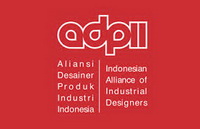Perancangan kursi sustainable yang berbasis budaya Nusantara di Pelabuhan Surabaya North Quay
Abstract
The design of this chair originated from the problems that exist in the waiting room of the Surabaya North Quay port where there are still many interior product designs for standard public spaces, so that it seems boring and uncomfortable to use for a long time, therefore an innovation has emerged to create. comfortable chairs used for a long time with the concept of lesehan culture which is a sitting culture that was passed down by our ancestors and we should maintain this distinctive feature of Indonesian sitting culture in the midst of an increasingly modern era. The design is designed so that the user can sit cross-legged and stretch out comfortably, therefore the seat is made wide with a reference to sitting cross-legged and long as a reference for sitting side-by-side so that the user can determine the sitting position that is most comfortable because it is different from western sitting culture which prioritizes ergonomics. Indonesians feel more comfortable when given the freedom to achieve the relaxation they desire. The main principle of sustainability that the writer wants to apply here by utilizing used material which is wasted into a pile of garbage can be a valuable product.
Keywords
Full Text:
PDFReferences
Ching, Francis D.K. (2008). Arsitektur : Bentuk, Ruang, dan Tatanan Ed 3. Jakarta: Erlangga.
Dekoruma, K. (2018). Apartemen Tetap Lapang dengan Smart Furniture. Retrieved June 12, 208 from https://www.dekoruma.com/artikel/68120/apartemen-tetaplapang-dengan-smart-furniture
Ho, M. C., Lin, C. H., & Liu, Y. C. (1996). Some speculations on developing cultural commodities. Journal of Design, 1(1), 1-15.
Jones, L. (2008). Environmentally responsible design: Green and sustainable design for interior designers. John Wiley & Sons.
KFH Group. (2009). Guidelines for the Design and Placement of Transit Stops. Washington: Washington Metropolitan Area Transit Authority, December2009.
Leong, D., & Clark, H. (2003). Culture-based knowledge towards new design thinking and practice - A dialogue. Design Issues, 19(3), 48-58.
Lin, R. T. (2007). Transforming Taiwan aboriginal cultural features into modern product design: A case study of a cross-cultural product design model. International Journal of Design, 1(2).
Panero, Julius & Zelnik, Martin. (1979). Human Dimension & Interior Space: A Source Book of Design Reference Standars. Whitney Library of Design.
Prasetya, R. D. (2016). Potensi Limbah Kayu Industri Mebel untuk Produk Home Accessories. PRODUCTUM Jurnal Desain Produk (Pengetahuan Dan Perancangan Produk), 1(1), 39–51
Wahid. (2012). Kevin Keller – Apa Itu Merek? Kenapa Merek Itu Penting? (1). Retrieved June 11, 2018 from https://marketing.co.id/kevin-keller-apa-itu-merekkenapa-merek-itu-penting-1/
DOI: https://doi.org/10.24821/productum.v5i1.4633
Refbacks
- There are currently no refbacks.
p-ISSN 2477-7900 | e-ISSN 2579-7328

This work is licensed under a Creative Commons Attribution 4.0 International License.
Like & Follow Us










